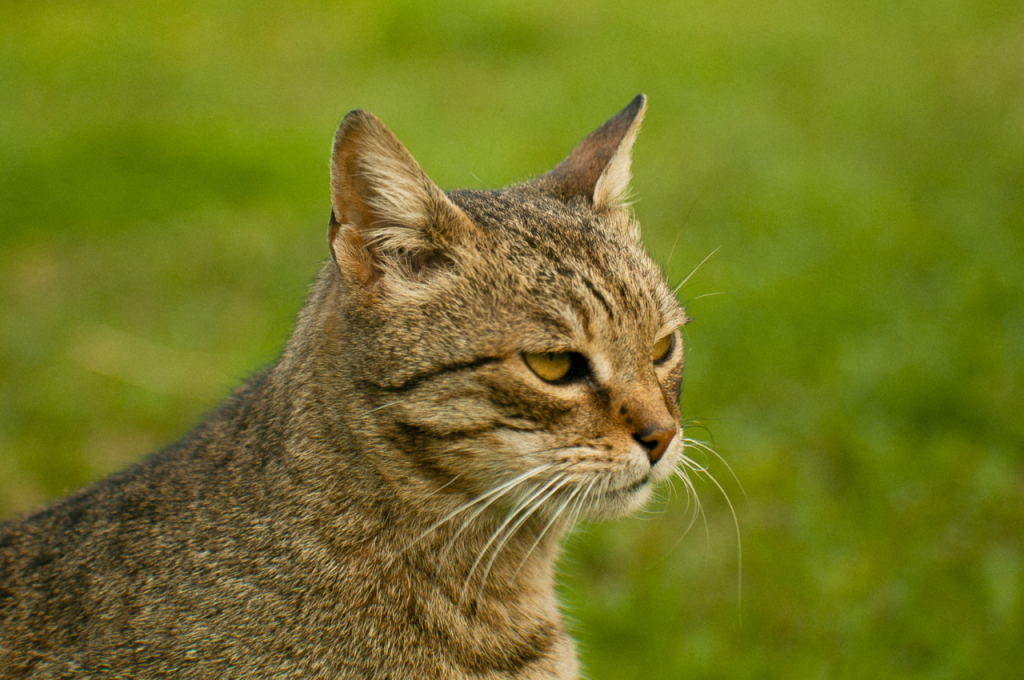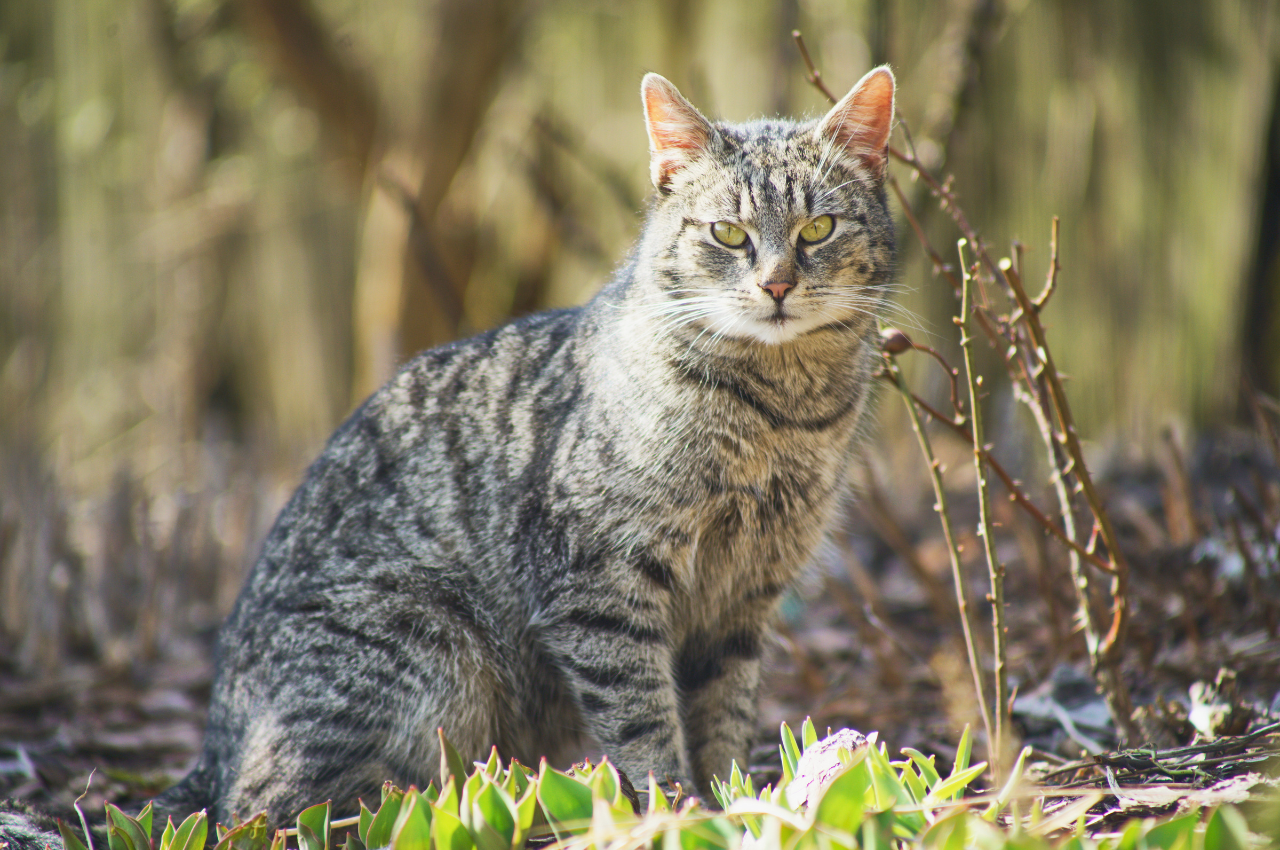Domesticated cats may struggle to survive in the wild due to their reliance on humans for food and shelter. In unfamiliar environments, they may lack the skills and instincts necessary for hunting and defending themselves against predators.
However, some domesticated cats have been known to adapt to the wild and survive by hunting small prey and seeking shelter in natural habitats. Despite these potential survival strategies, it is generally recommended to keep domesticated cats indoors to protect them from the dangers and risks they may encounter in the wild. By providing a safe and secure environment, owners can ensure the health and well-being of their feline companions.
The Feline Predicament
Domesticated cats are adapted to life with humans, relying on us for food and shelter. While they possess natural instincts, such as hunting skills, that might help them survive in the wild, they lack the survival skills and resilience of truly feral cats. Factors like dependence on human-provided food, lack of experience in avoiding predators, and unaccustomedness to harsh environmental conditions make it challenging for domesticated cats to thrive outside. Their survival chances in the wild are limited, emphasizing the importance of responsible pet ownership and not abandoning cats.

Domestic Bliss vs. Wild Instincts
Domesticated cats, known for their cozy indoor lifestyles, face a significant challenge when thrust into the wild. The contrast between the comfort of home and the demands of survival in the wild creates a feline predicament.
The Adaptability of Cats
Cats possess remarkable adaptability due to their innate hunting skills and agile nature. This enables them to tap into their primal instincts when navigating the challenges of the wild, albeit with varying degrees of success.
Survival Skills of Feral Felines
Feral felines possess a range of survival skills that enable them to thrive in the wild. They are adept hunters, relying on keen senses and stealth to catch prey. Feral cats are skilled in finding shelter, using natural and man-made structures to protect themselves from the elements and predators. They also exhibit strong territorial behavior, marking and defending their territory to secure resources. Additionally, feral cats are highly resourceful, often scavenging for food and adapting their diet based on availability. Their ability to form loose, social groups helps with survival and learning from one another. These instincts and skills make feral cats well-suited to life outside of domestic environments.
Hunting Techniques
Feral cats rely on their innate hunting instincts to catch prey, employing stealth and patience to stalk their target. They use a combination of pouncing, leaping, and rapid acceleration to capture small animals, relying on their keen sense of hearing and sight to locate potential meals. Cats are skilled hunters, known for their ability to catch birds, rodents, and insects.
Territory and Shelter
Feral cats establish and defend their territories, which provide them with a consistent source of food and shelter. They tend to seek out secluded areas such as abandoned buildings, alleys, or overgrown vegetation to create their dens. By marking their territories with scent glands located on their cheeks and paws, feral cats communicate with other cats and reduce potential conflicts over territory.
Health Challenges in The Wild
Domesticated cats face significant health challenges when attempting to survive in the wild. These challenges include disease and injury, as well as nutrition and diet constraints. Let’s explore these health challenges in more detail.
Disease and Injury
When cats transition from domestic life to the wild, they become more susceptible to diseases such as feline leukemia and feline immunodeficiency virus. Additionally, they face an increased risk of injuries due to encounters with other wild animals and environmental hazards.
Nutrition and Diet Constraints
In the wild, cats may struggle to find adequate nutrition, leading to malnourishment. Their diet constraints can result in deficiencies of essential nutrients, impacting their overall health and ability to thrive in the wild.
Behavioral Traits and Survival
Domesticated cats may struggle to survive in the wild due to their reliance on humans for food and shelter. Behavioral traits like hunting instincts may help, but lack of experience could hinder their chances of long-term survival.

Social Structure
Domesticated cats are social creatures, and in the wild, they usually live in groups called colonies. These colonies are formed by feral cats that are related to each other. The social structure of a cat colony is hierarchical, where each cat has its place in the group. The hierarchy is determined by age, sex, and size.
Solitude
Although cats are social creatures, they can also survive on their own. Domesticated cats have the ability to hunt and defend themselves, making them well-suited for survival in the wild. However, cats that are used to human companionship may struggle to adapt to a solitary life. Such cats may experience stress and anxiety when left alone.
Stress Responses in New Environments
When placed in a new environment, cats can experience stress. They may hide, become aggressive, or refuse to eat. In the wild, a cat’s stress response can be triggered by changes in their environment, such as the presence of predators or the lack of food. However, cats that are accustomed to living outdoors are more likely to adapt to new environments.
In conclusion, domesticated cats can survive in the wild, but their success depends on their behavioral traits and ability to adapt to new environments. A cat’s social structure, ability to live in solitude, and stress response can all play a role in their survival.
The Debate on Indoor vs. Outdoor Cats
The question of whether cats can survive in the wild is a topic of much debate among pet owners. While some believe that cats are natural hunters and can fend for themselves outdoors, others argue that domesticated cats are not equipped to survive in the wild and should be kept indoors.
Pros and Cons
There are pros and cons to both keeping your cat indoors and allowing them to roam free outdoors. Here are some of the key advantages and disadvantages of each:
| Indoor Cats | Outdoor Cats |
Less likely to get lost or injuredLower risk of contracting diseasesNo risk of being hit by a car or attacked by other animalsReduced risk of exposure to parasites and toxins | Opportunity to explore and exerciseNatural hunting and stalking behaviors can be fulfilledLess likely to become bored or anxiousExposure to fresh air and sunlight |
Owner Responsibilities
Regardless of whether you choose to keep your cat indoors or let them roam free outdoors, it is important to take on certain responsibilities as a pet owner. Here are some things to keep in mind:
- Provide your cat with adequate food, water, and shelter
- Ensure your cat receives regular veterinary care
- Spay or neuter your cat to prevent overpopulation
- Keep your cat up to date on vaccinations
- Provide your cat with a safe and secure environment
Ultimately, the decision to keep your cat indoors or allow them to roam free outdoors is a personal one that should be based on your cat’s individual needs and temperament, as well as your own lifestyle and living situation. By taking on the responsibilities of a pet owner, you can help ensure that your cat has a happy and healthy life, whether they are an indoor or outdoor cat.
Protecting Wildlife from Domestic Cats
To protect wildlife from domestic cats, it’s crucial to consider the impact of letting them roam outdoors. While domesticated cats may survive in the wild, their hunting instincts pose a threat to birds and small animals. Implementing measures like keeping cats indoors can help safeguard local wildlife populations.

Environmental Concerns
Domestic cats are a threat to wildlife, particularly birds, reptiles, and small mammals. They are natural predators and can cause significant harm to local ecosystems. Feral cats, in particular, pose a significant threat to local wildlife as they hunt without any restraint. According to the American Bird Conservancy, domestic cats kill an estimated 2.4 billion birds in the United States each year. This number is alarming, and it is essential to take measures to protect local wildlife from these predators.
Responsible Cat Ownership
As a cat owner, it is your responsibility to ensure that your pet does not pose a threat to the local wildlife. Here are some steps you can take to be a responsible cat owner:
- Keep your cat indoors or in a secure outdoor enclosure to prevent them from hunting wildlife.
- Spay or neuter your cat to reduce their desire to roam and hunt.
- Provide plenty of toys and playtime to keep your cat mentally and physically stimulated.
- Consider using a bell on your cat’s collar to alert wildlife of their presence.
By taking these measures, you can help protect the local wildlife and ensure that your cat is a responsible member of the community. Domestic cats can survive in the wild, but they pose a significant threat to local wildlife. As responsible cat owners, it is our responsibility to take measures to protect the local wildlife and ensure that our pets are not harming the environment. By keeping our cats indoors or in secure outdoor enclosures, spaying or neutering them, and providing plenty of toys and playtime, we can help protect the local ecosystem and ensure that our pets are happy and healthy.
Conclusion
The question of whether domesticated cats can survive in the wild is a complex one. While cats possess innate hunting instincts, their reliance on humans for food and shelter can make it challenging for them to adapt to the harsh realities of the wild. While some cats may manage to survive, it is generally safer for them to remain in a domesticated environment where their needs are met. Ultimately, responsible pet ownership and providing a safe, loving home for cats is crucial for their well-being.
